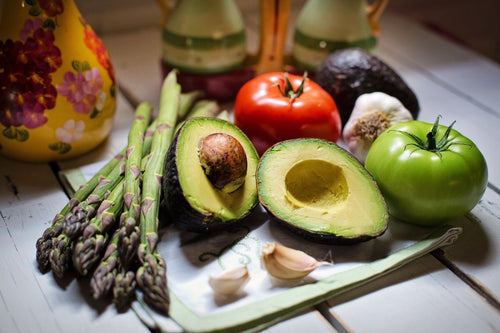Back pain is a widespread problem that affects many people. However, holistic treatment can help alleviate the discomfort. In this article, you'll learn how various exercises, proper posture, and a natural diet can contribute to better back health. We'll also explore the role of yoga, Pilates, and various holistic approaches to pain relief.
Natural ways to relieve back pain
Which exercises are particularly effective?
To address back pain holistically, it's important to incorporate various exercises into your daily routine. Strengthening and stretching exercises, which strengthen muscles and promote mobility, are particularly effective.
Strengthening back exercises
- Push-ups and planks are excellent for strengthening the back and abdominal muscles.
- Rowing with a rubber band or dumbbells strengthens the central back muscles.
- Pelvic lifts and bridge exercises activate the gluteal muscles and thus relieve the lower back.
Stretching back exercises
- Cat back and chin exercises mobilize the spine.
- Lateral stretches stretch and loosen the muscles on the sides of the back.
- Piriformis stretches relieve tension in the buttocks and hip area.
- It is important to perform the exercises slowly and in a controlled manner in order to place optimal strain on the muscles.
- Regular training – preferably daily – is the key to noticeable improvements.
- Paying attention to the correct technique helps to avoid injuries.
This combination of strengthening and stretching can significantly reduce back pain. The most important thing is to persevere and integrate the exercises into your daily routine.
How does correct posture affect back pain?
An upright and balanced posture is crucial for back health. Poor posture puts strain on the spine and leads to pain over time.
Tips for a back-friendly posture
- Make sure your head is upright and your chin is slightly tucked in.
- Keep your back straight and your shoulders back.
- Your pelvis should be tilted slightly forward to support the natural lordosis of the lumbar spine.
- When sitting, standing and walking, make sure to distribute your weight evenly on both feet.
Posture in everyday life
- Make sure your back is stable when sitting at your desk or during leisure time.
- Always carry heavy loads close to your body to avoid pulling forces on your back.
- Take regular breaks to correct your posture.
- Good posture relieves pressure on the spine and thus prevents back pain in the long term.
- Mindfulness in everyday life helps to recognize bad posture and to counteract it in a timely manner.
- Over time, correct posture becomes a habit - the key to a healthy back.
An upright, balanced posture is essential for a healthy back. It should become a matter of course in everyday life.
How do I incorporate regular exercise into my daily routine?
Regular exercise is the key to a healthy back. However, many people find it difficult to be sufficiently active, especially in their hectic daily lives. With a few tricks, however, this can easily be changed.
Small exercise units in everyday life
- Get up and walk around more often instead of sitting for long periods.
- Use stairs instead of elevators or escalators.
- Take short stretching breaks at work.
- Go outside for some fresh air during your lunch break.
Schedule regular training
- Find a sport that you enjoy and that fits into your everyday life.
- Schedule fixed training times in your calendar.
- Ask friends or family to remind and motivate you.
- Small steps lead to the goal - the important thing is to be active regularly.
- Discover forms of exercise that bring you joy. This will make it easier to integrate them into your daily routine.
- Be patient with yourself, habits take time to establish.
Regular exercise is the key to a healthy back. With the right approach, it's easy to incorporate into your daily routine.
The perfect diet for a healthy back
Which foods support back health?
Many people suffer from back pain, often due to an unbalanced diet. However, certain foods can positively influence back health and relieve pain.
A balanced, nutrient-rich diet is key to a healthy back. Some particularly recommended foods include:
- Omega-3-rich fish such as salmon, mackerel, or tuna. They have anti-inflammatory effects and support joint function.
- Whole grain products such as bread, pasta, or rice provide important fiber, vitamins, and minerals.
- A wide variety of vegetables and fruits provide the body with antioxidant nutrients.
- Legumes such as lentils, beans, or chickpeas contain valuable protein and fiber.
Make sure your diet is as varied as possible to ensure your body receives all the essential nutrients. This is the only way to benefit from its health-promoting properties in the long term.
How do natural anti-inflammatories work?
Inflammation in the back and joints can cause pain and limited mobility. However, certain foods can naturally reduce inflammation and thus provide relief.
The most important natural anti-inflammatories include:
- Ginger: Ginger contains anti-inflammatory substances such as gingerol, which can reduce pain and swelling.
- Turmeric: The active ingredient curcumin in turmeric also has strong anti-inflammatory properties.
- Green tea: Green tea is rich in polyphenols, which inhibit the body's inflammatory response.
By regularly consuming foods with natural anti-inflammatories, you can effectively relieve your back pain and support your body in the long term.
Which vitamins and minerals are important?
In addition to anti-inflammatory foods, certain vitamins and minerals also play a crucial role in back health. They contribute to bone stability, muscle strength, and joint function.
The following nutrients are particularly valuable for a healthy back:
- Vitamin D: Vitamin D promotes calcium absorption and is essential for bone health.
- Calcium: Calcium is the most important building block for strong bones and teeth.
- Magnesium: Magnesium supports muscle function and prevents tension.
- Vitamin C: Vitamin C is important for the formation of collagen, which stabilizes cartilage and ligaments.
Make sure your diet includes these nutrients. If necessary, dietary supplements may also be helpful to achieve optimal levels of intake.
How can I create a meal plan for relief?
To relieve back pain in the long term, it's important to tailor your diet plan to your specific needs. You can do this step by step and noticeably reduce your symptoms.
The following steps can help you develop an individual nutrition plan:
- Analyze your current condition: Document your current diet and symptoms.
- Identify bottlenecks: Find out which important nutrients are missing from your diet.
- Adjust your diet: Make sure you eat enough anti-inflammatory, bone-building, and muscle-strengthening foods.
- Check regularly: Observe how your symptoms change over time and adjust your plan if necessary.
With a customized nutrition plan, you can support your back in the long term and significantly improve your quality of life. Consult a nutritionist to find the optimal approach for you.
What role does physiotherapy play?
Physiotherapy is an important component in the treatment of pain and limited mobility. Physiotherapists use various techniques to improve the body's mobility and functionality.
The main goals of physiotherapy include:
-
Pain relief through targeted exercises and manual techniques
-
Improvement of movement sequences and coordination
-
Strengthening muscles and improving posture
-
Acceleration of the healing process after injuries
-
Physiotherapists first carry out a thorough examination to determine the causes of the symptoms.
-
They then create an individual treatment plan tailored to the patient’s specific needs.
-
In addition to classic exercises, methods such as electrotherapy, ultrasound treatment or cold and heat applications are often used.
Physiotherapy plays a crucial role in the treatment of pain and mobility restrictions. Through its holistic approach and the combination of various techniques, impressive results can often be achieved. It is therefore an important component of an integrative treatment concept.
How do chiropractic and osteopathy work?
Chiropractic and osteopathy are two treatment approaches that focus on manipulating and mobilizing the musculoskeletal system. Both methods are based on the assumption that dysfunctions and blockages in the musculoskeletal system are the root cause of many complaints.
The focus of chiropractic is primarily on the spine and joints:
- Chiropractors perform targeted adjustments and alignments of the spine to release blockages and improve energy flow.
- This is intended to enable the body to activate self-healing processes and relieve pain.
Osteopathy, on the other hand, views the body as a holistic system:
-
Osteopaths treat not only the spine, but the entire musculoskeletal system, including the joints, muscles, tendons and fascia.
-
Manual techniques such as mobilization, stretching and tissue treatment are intended to release tension and blockages.
-
The goal is to promote the body’s natural ability to move and self-regulate.
-
Chiropractic and osteopathy are often used for back pain, neck pain, headaches and joint problems.
-
Both methods can also be supportive in chronic illnesses such as asthma, digestive disorders or migraines.
Chiropractic and osteopathy offer holistic treatment approaches that view the body as a coherent system. Targeted manual techniques can release blockages and activate the body's self-healing powers. In combination with other complementary therapies, these methods can be a valuable contribution to pain relief and health promotion.
Are there any tools that can be helpful?
In addition to the holistic treatment methods mentioned above, there are also a number of aids that can support the healing process and pain relief.
The most important tools include:
-
Orthoses and supports: They stabilize and relieve injured or stressed joints and body parts.
-
Pain-relieving ointments and creams: Special preparations based on essential oils or cold-heat cycling can reduce pain.
-
Electrotherapy devices: Devices such as TENS devices or infrared lamps can influence blood circulation and pain perception through targeted stimulation.
-
Movement and balance exercises: Targeted training can improve stability and coordination and thus prevent subsequent injuries.
-
These aids can be used in addition to other treatment methods to accelerate the healing process and improve quality of life.
-
However, caution is advised when using these products, as some can have side effects. Therefore, consulting a doctor or therapist is recommended.
Holistic approaches to pain relief have great potential when used individually and in combination. The integration of acupuncture, physiotherapy, chiropractic, osteopathy, and appropriate aids can often produce impressive results. It is always important to consider the body as a whole and activate the organism's self-healing powers.
Q&A
Which exercises are particularly effective against back pain?
Strengthening exercises such as push-ups and planks, as well as stretching exercises such as cat poses and piriformis stretches, are particularly effective for relieving back pain.
How does posture affect back pain?
An upright posture relieves strain on the spine and prevents poor posture that can cause back pain. Maintain a straight posture and take regular breaks.
Which diet supports back health?
A balanced diet with omega-3-rich fish, whole grains, and plenty of fruits and vegetables can relieve back pain and promote overall health.
How can a healthy diet help with back pain?
Certain foods have anti-inflammatory effects and provide important vitamins and minerals that contribute to the stability and health of bones and muscles.
Back pain doesn't have to dominate your life. With a combination of targeted exercises, conscious posture, and a balanced diet, you can significantly improve your back health. Take advantage of the benefits of yoga and Pilates and incorporate regular exercise into your daily routine. A holistic approach can help you sustainably relieve pain and improve your quality of life.









